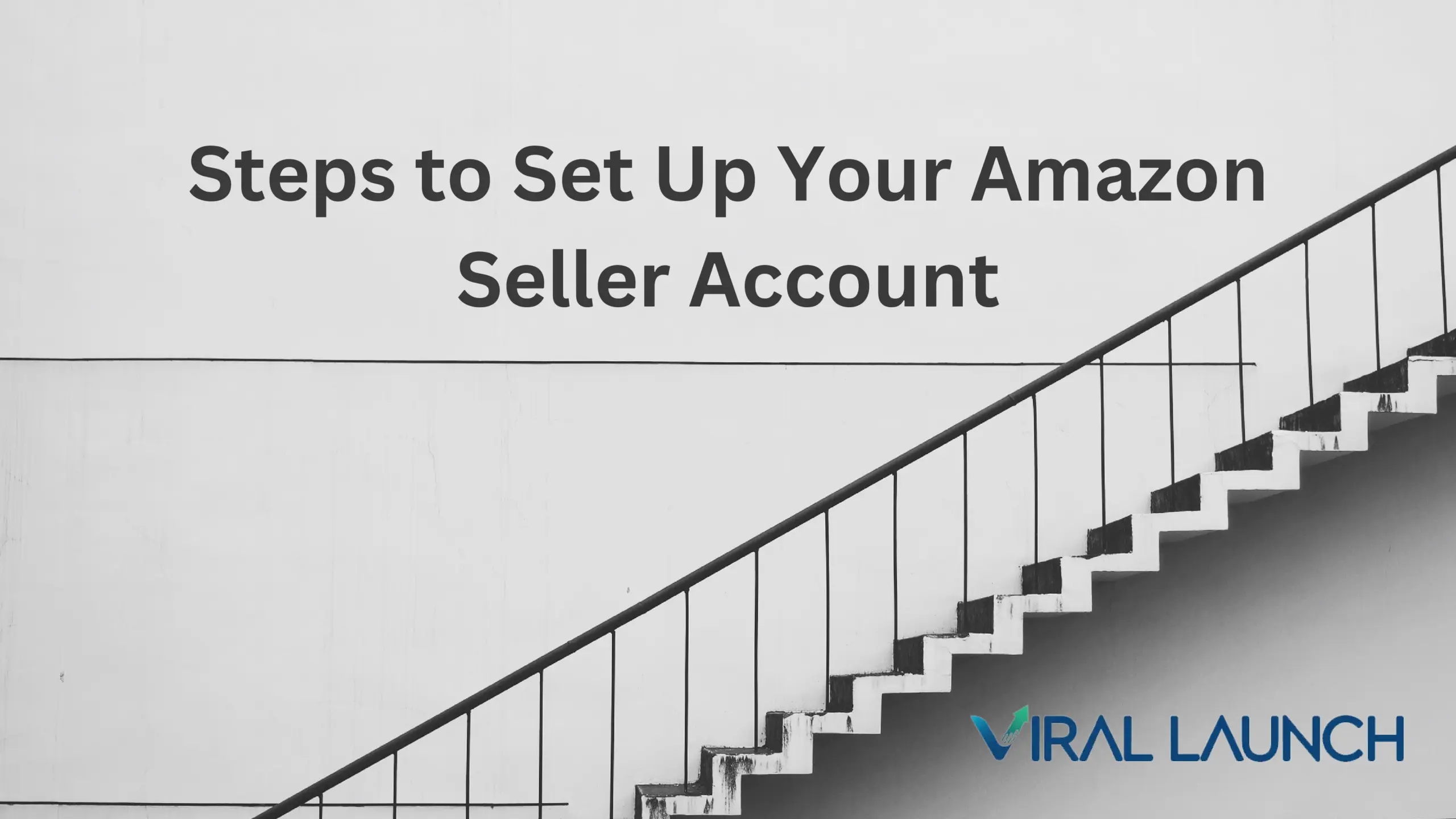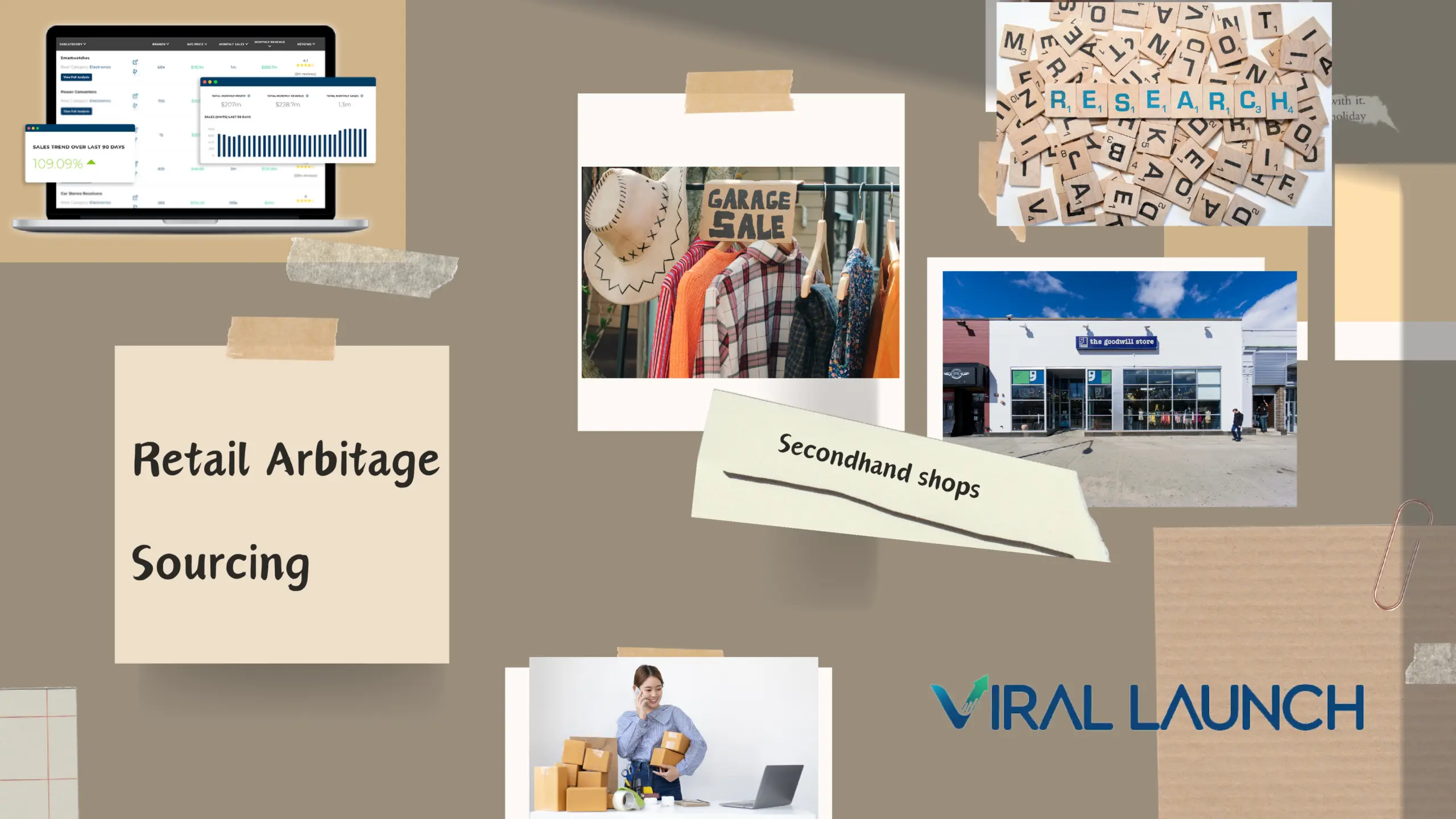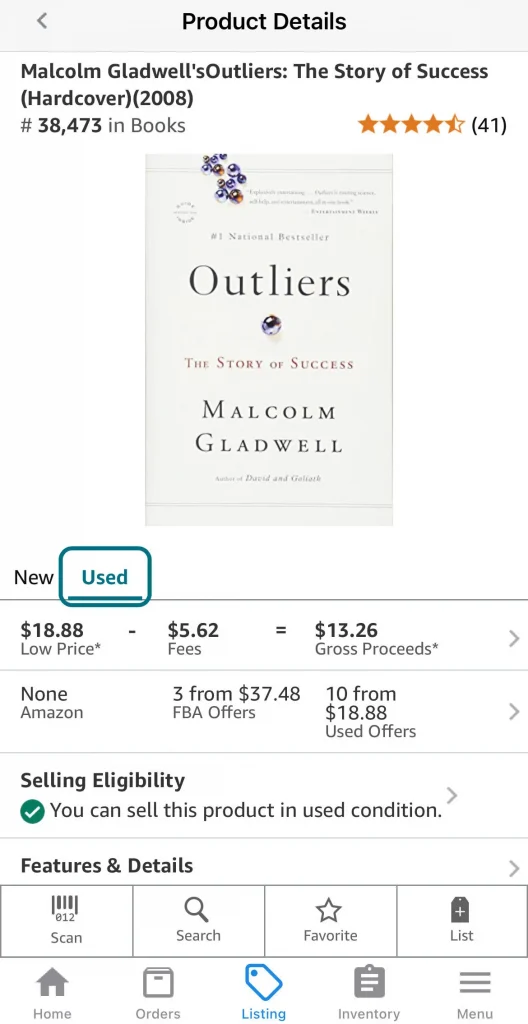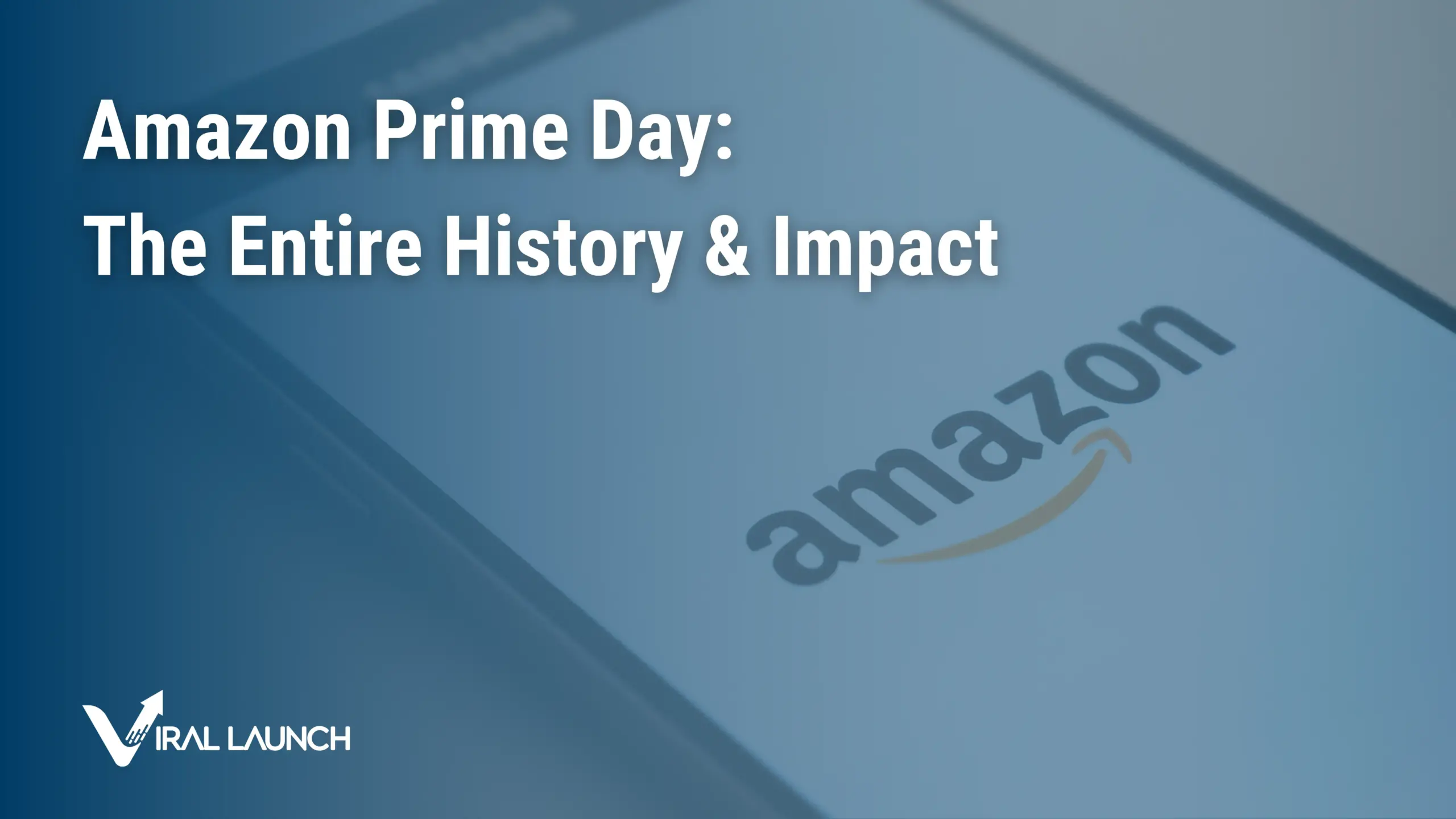Imagine strolling through your local big-box store, smartphone in hand, and transforming that casual shopping trip into a treasure hunt for profits. Welcome to the world of Amazon retail arbitrage, where savvy entrepreneurs turn clearance aisles into gold mines and price tags into profit margins.
It’s a business model that’s revolutionizing the way people approach e-commerce, allowing anyone with a keen eye for deals and a willingness to learn to build a thriving Amazon business from the ground up.
In this guide, we’ll unlock the secrets of successful arbitrage sellers, showing you how to turn your bargain-hunting skills into a lucrative side hustle or even a full-time income stream. Ready to see those retail shelves in a whole new light? Let’s dive in and discover how you can start your own Amazon retail arbitrage journey today.
Amazon Retail Arbitrage Explained
What Is Retail Arbitrage?
Retail arbitrage is a business model where sellers purchase products from retail stores at a discounted price and then resell them at a higher price, pocketing the difference as profit. This strategy takes advantage of price discrepancies between marketplaces, allowing savvy entrepreneurs to capitalize on these opportunities.
How does retail arbitrage work? Let’s break this down with a practical example:
Imagine you’re browsing the clearance section at your local Target store, and you come across a popular board game that’s usually priced at $30 but is now on clearance for $10. You check Amazon for a price comparison and find out it’s a hot-selling item selling for $40 on the marketplace. While you’ll still need to account for tax, fees, and other potential costs, you’ve likely uncovered a promising opportunity for arbitrage selling on Amazon.
Further down, we’ll dive into more methods of retail arbitrage on Amazon, but hopefully, through this example, you can understand how it works at a basic level.
Pros and Cons of Retail Arbitrage on Amazon
There are plenty of ways to get involved in making money on Amazon, and each comes with a set of pros and cons. Before diving into online arbitrage, review the table below to better understand the advantages and challenges you might face.
| Pros | Cons |
|---|---|
| Low initial investment | Time-consuming product sourcing |
| Flexibility in product selection | Inconsistent inventory availability |
| Potential for high profit margins | Competition from other arbitrage sellers |
| Quick start-up process | Risk of price fluctuations |
| Learn Amazon selling basics | Potential for restricted or gated products |
| No need for product development | Limited scalability compared to s private label business |
Selling on Amazon also allows you to sell to a global audience, reaching customers who remain inaccessible on most selling platforms. Generally speaking, if you want to sell products online, Amazon is the place to be.
How To Get Started With Amazon Retail Arbitrage
Requirements When Starting Out
When learning how to retail arbitrage on Amazon, we recommend adopting a beginner’s mentality, even if you have previous selling experience. To begin your Amazon retail arbitrage journey, you’ll need:
- An Amazon seller account
- Basic understanding of Amazon’s policies and fees
- Initial capital for purchasing inventory
- Time and willingness to learn and adapt
These four tenets can go a long way regarding how to start Amazon arbitrage on the right foot. 1, 2, and 4 require a commitment to creating your account and a sturdy foundation for your upcoming selling experience. Dig through our blog archives and Amazon seller forums for Amazon seller tips for beginners and veterans alike. For 3, be sure to stick to your budget and focus on building your bankroll early on so you can expand your offering later as profits roll in.
Steps to Set Up Your Amazon Seller Account

Setting up an Amazon seller account is surprisingly easy, and can be set up in minutes with the right documentation.
- Visit Amazon Seller Central
- Choose between Individual and Professional selling plans
- Provide your business information and tax details
- Set up your billing and deposit methods
- Complete the verification process
For more in-depth instructions, check out our step-by-step guide on how to create an Amazon seller account. Once you’ve completed all requirements and submitted your application, you can typically expect to hear back from Amazon within 24-72 hours with an approval or rejection. However, in rare cases, it can take weeks for approval.
Tools and Resources You’ll Need
To succeed in Amazon retail arbitrage, you’ll need more than just a keen eye for deals. The right tools and resources can significantly boost your efficiency and profitability. Here’s a comprehensive list of what you’ll need:
Essential Tools for Retail Arbitrage on Amazon
The basis of effective retail arbitrating depends on your ability to know the price of products, find products below that price, and sell them for retail prices or higher. Knowing ballpark estimates for how much a product costs can be beneficial for more than just The Price Is Right. However, the right scanning apps can speed up your arbitrage for Amazon FBA product hunt and give you a more accurate reading of all the important factors related to retail arbitrage selling. A few of them include:
- Amazon Seller App: Free app provided by Amazon that allows you to scan products and see potential profitability.
- ShopSavvy: Another free app that scans bar codes for price checks, allowing you to compare prices at nearby stores or online retailers.
- Viral Launch: Along with the Amazon Seller app and ShopSavvy, you can utilize Viral Launch’s combination of Market Intelligence and Product Discovery to monitor sales history and pricing. Additionally, our free FBA calculator helps you estimate potential profits by factoring in Amazon fees, shipping costs, and your desired profit margin, a must-have for sellers.
By using these tools, you’ll make better sourcing decisions, avoid unprofitable products, and be able to know the market for any product with a simple search.
Sourcing Profitable Products

How to Select Profitable Products
When researching and selecting products, it’s essential to focus on high-demand, low-competition items that offer good profit margins. Here’s what to look for:
- High demand: Check Market Intelligence to view sales trends and search volume estimates that can be used to infer demand. Be sure to view sales and search volume data over the long run in addition to recent trends to avoid seasonality.
- Low competition: Avoid listings with too many sellers unless you’re sure you can compete on price or offer something unique (like faster shipping).
- Product restrictions: Be aware that some categories on Amazon, like electronics or beauty products, require approval before you can sell. Always check before sourcing a large quantity of a restricted product.
Pro Tip: Don’t just focus on current demand – look for products with consistent sales over time. Use Viral Launch’s Product Discovery tool to filter for products with a steady sales history and manageable competition. This approach can help you avoid seasonal traps and find more sustainable arbitrage opportunities. Check out our guide on advanced product research techniques for more insights.
Where You Can Find Profitable Products
The beauty and the struggle of retail arbitrage sourcing is you can find great arbitrage products anywhere. From garage sales to secondhand shops to big-box retailers, you can find a winning product just about anywhere with the proper product research tools or market knowledge.
- Big-box stores like Walmart and Target.
- Online retailers like eBay or Facebook Marketplace.
- Seasonal sales and holiday clearance events.
- Even garage sales or secondhand shops.
If you have a skill at refurbishing or restoring products, this can be an incredibly lucrative skill as the opportunity to buy low, fix, and sell for a substantial profit is heightened with the proper product and skill set. If this applies to you, check out our guide on how to make money with Amazon Renewed.
Calculate Your Potential Profit Margins
While the concept of Amazon seller arbitrage (buying a product and then selling it at a higher price) may seem straightforward, it can be deceptive. Almost always, there are costs related to shipping and selling on Amazon. Before purchasing an item and thinking you’ve found a profitable product for reselling on Amazon, consider the following:
- Purchase price vs. selling price: How much did you pay for the product, and how much can you reasonably sell it for on Amazon?
- Amazon fees: These include referral fees and fulfillment fees if you’re using FBA.
- Shipping costs: Factor in both the cost to ship products to Amazon’s fulfillment centers and any costs to ship directly to customers if you’re using FBM.
Fees and costs will vary based on your seller account and product. For that reason, we recommend using our free FBA calculator to accurately estimate your potential profits and account for all associated fees with built-in percentages and costs, along with the option to customize aspects to account for each and every product.
Select Your Fulfillment Method
On Amazon, sellers are afforded two options for fulfillment: Fulfillment by Amazon (FBA) and Fulfillment by Merchant (FBM). When deciding between the two, there are multiple things to take into consideration that impact your bottom line, structure of your business, and general responsibilities.
FBA vs. FBM
| FBA | FBM |
|---|---|
| Amazon handles storage, packing, and shipping | You handle storage, packing, and shipping |
| Eligible for Prime shipping | Not automatically eligible for Prime |
| Higher fees, but potentially higher sales | Lower fees, but potentially lower sales |
| Easier to scale | More control over inventory and shipping |
| Hands-off fulfillment process | Requires more time and resources |
If you choose FBA arbitrage, you’ll be faced with higher fees, but Amazon takes care of the fulfillment, logistics, and customer service involved with selling. This narrows your selling scope even further, allowing you to focus more time on finding profitable products and expanding your Amazon FBA retail arbitrage offering.
On the other hand, FBM involves fewer fees to improve your Amazon profit margins, but creates a more hands-on experience that is likely to demand more time and attention from you.
For a more in-depth comparison to help you decide on the right fulfillment method for your Amazon arbitrage business, check out our article on FBA vs. FBM: A Complete Comparison for Amazon Sellers.
List Your Products on Amazon
Once you’ve selected and sourced products, it’s time to list them on Amazon. Below, we’ll dive into how to list them to remain in good standing with Amazon and how to reach customers.
List Used or Like New Products Appropriately
If you’re selling secondhand products you purchased at a steep discount, you may be best served selling on an existing product listing. While you won’t own the buy box, you may be able to swoop in and steal sales by selling your product in its condition at a much cheaper price, or at least cheap enough to justify a customer choosing yours over the primary seller.
For example, below is the product listing for Outliers: The Story of Success by bestselling author Malcolm Gladwell.

For a brand-new hardcover from the buy-box owner, it’s $42, with limited copies available. Someone is selling the exact same book but in “Good” condition for $16.24.
With such a popular book by an acclaimed author, it’s unlikely that Outliers will be out of demand any time soon. Used copies in excellent condition or discounted brand-new editions at bookstores are likely awaiting in bookstores all around the country that could be sold for anywhere below the $42 mark.
If you could find a cheap copy, you’d want to go to Seller Central on a browser or through the Amazon Seller App, select Add Product, search for the book, and select the exact same hardcover edition.

From there, you can set your price while viewing what others are currently offering for similar products. Additionally, if you click on the pricing, you can get a fee-by-fee breakdown of your profits at any price point.
Once you’ve broken it down and ultimately decided upon reselling your copy, just complete the rest of the Offer by accurately detailing its condition and deciding upon fulfillment before submitting your offer and voila, you’re on your way to making money.
However, if you do not see an existing product listing, you’ve got some work to do, which brings us to…
Create Effective Product Listings
If you’re selling a product without a current listing, you may need to create your own product listing. Make sure your listings are optimized for success by:
- Writing clear, keyword-rich titles and descriptions: Include relevant keywords, but don’t keyword stuff. Focus on highlighting the product’s main benefits.
- Adding high-quality images: Make sure your product images are clear, high-resolution, and show multiple angles of the item. Check out out guide on all of Amazon’s product image requirements.
- Enhancing with A+ Content: If available, use A+ content to showcase your product’s features, adding trust and value to your listing.
Pro Tip: Optimizing your product listings is crucial for arbitrage success, especially when competing with other sellers on the same listing. Download our free Amazon Product Listing Optimization Checklist to ensure you’re making the most of your product titles, bullet points, and descriptions. A well-optimized listing can significantly improve your chances of winning the Buy Box, even against established sellers.
Master Inventory Management & Pricing
Effective inventory management and smart pricing strategies are key to long-term success in Amazon retail arbitrage. Here’s how to excel in these critical areas:
Inventory Management Best Practices
- Track Your Inventory Levels: Regularly monitor your stock levels to avoid stockouts or overstocking. Viral Launch’s Market Intelligence tool can help you estimate how quickly products are likely to sell, aiding in inventory planning.
- Monitor Product Performance: Regularly review your product performance metrics in Amazon Seller Central. Identify slow-moving items and consider adjusting your pricing or sourcing strategy accordingly.
Pro Tip: Seasonal fluctuations can significantly impact inventory needs. Use Viral Launch’s historical sales data based on Amazon sales rank and other key indicators to anticipate seasonal trends and adjust your inventory accordingly. Learn more about effective Amazon inventory management strategies in our comprehensive guide.
Pricing Strategies for Arbitrage Success
- Dynamic Pricing: Regularly adjust your prices based on competition, demand, and inventory levels. Tools like Viral Launch’s Market Intelligence can help you stay informed about market trends and competitor pricing.
- Repricing Tools: Consider using Amazon’s automated pricing tool or third-party repricing software to automatically adjust your prices within set parameters, helping you stay competitive and win the Buy Box more often.
Remember, successful pricing in retail arbitrage is a balance between staying competitive and maintaining healthy profit margins. It’s not always about being the lowest price, but about offering the best value proposition to your customers.
By mastering inventory management and pricing strategies, you’ll be better equipped to navigate the challenges of Amazon retail arbitrage and build a sustainable, profitable business.
Amazon Retail Arbitrage: Step-by-Step Process
To recap, retail arbitrage selling on Amazon follows six main steps, each with a subset of steps within it that should be considered before moving forward.
1: Set Up Your Amazon Seller Account
- Sign Up: Go to Amazon Seller Central and create an account.
- Choose Your Plan: Decide between the Individual plan (no monthly fee, but a $0.99 fee per sale) or the Professional plan ($39.99/month).
- Provide Information: Fill in your business details, tax info, and bank account information.
2: Get Ready to Source Products
- Download the App: Install the free Amazon Seller app on your smartphone.
- Enable Barcode Scanning: Allow the app to access your camera for easy product scanning.
- Perform Product Research: Find winning product ideas with Viral Launch’s Market Intelligence and Product Discovery.
3: Find Profitable Products
- Visit Local Stores: Check out retailers like Walmart, Target, or Ross.
- Look for Deals: Focus on clearance sections and discounted items.
- Scan Barcodes: Use the Amazon Seller app to scan products and check:
4: List Your Products on Amazon
- Select “Sell on Amazon” in the app after scanning an item.
- Choose Condition (New or Used).
- Set Your Price based on your research.
- Submit Your Listing
5: Find A Fulfillment Method That Works for You
- Fulfillment Method: Decide between Fulfilled by Amazon (FBA) or Fulfilled by Merchant (FBM).
- Package Items Carefully to avoid damage during shipping.
- Create a Shipping Plan in Seller Central and pack items according to Amazon’s guidelines.
- Ship Your Products to Amazon’s fulfillment centers or the customer.
6: Manage Your Business
- Monitor Inventory regularly.
- Adjust Prices to stay competitive.
- Track Expenses and Profits diligently.
- Reinvest Profits into new inventory.
Final Thoughts on Amazon Retail Arbitrage
Amazon retail arbitrage is a powerful opportunity for anyone willing to put in the time and effort to master the process. By strategically sourcing discounted products from retail stores or online, you can quickly turn a profit and scale your business—without the overhead of developing your own products.
Throughout this guide, we’ve covered everything you need to get started, from setting up your Amazon seller account to finding profitable items, calculating your margins, and optimizing your listings. Whether you want to create a side hustle or build a full-time business, the tools and strategies are at your fingertips.
With patience, persistence, and a keen eye for deals, you can carve out your own space in the Amazon marketplace. Now that you know how to do retail arbitrage on Amazon, you’re free to chart your own path, whether that be a part-time side hustle or a full-time empire. Remember, every successful seller started where you are now—with a few products, a lot of questions, and a determination to make it work.
Ready to dive in? Download our free eBook to discover the next great product for your Amazon business!








